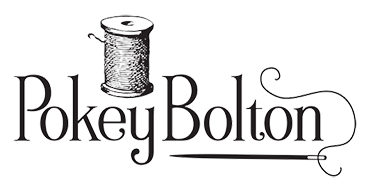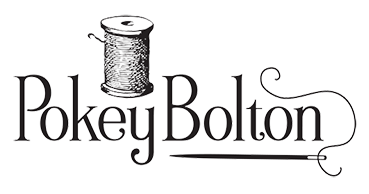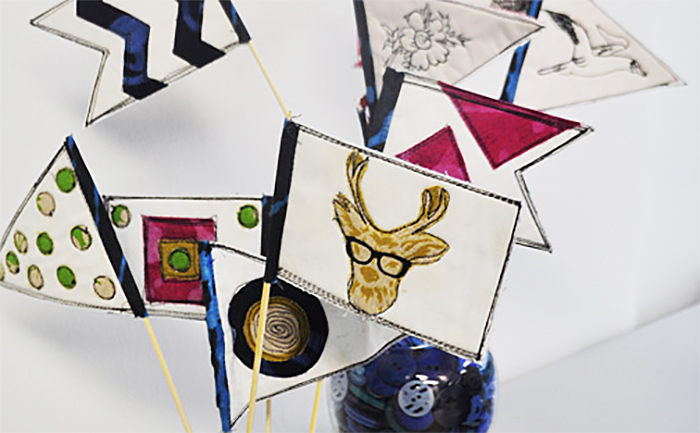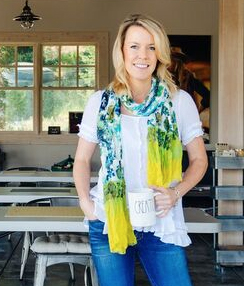
Wine coasters made with coordinating quilt fabrics, making it easy to distinguish whose glass belongs to whom. Fabric line is “Reunion” by Sweetwater Fabrics for MODA.
A parent’s job educating their offspring is never done, even if said youngin’ is earning a living, paying bills, and in her 40’s. My mom came to visit me this past weekend and guess what she taught me to make? Wine coasters that when flipped over, can serve double duty as mug rugs. Well…mug rugs are technically large enough to fit a coffee mug and a small snack…which these don’t. So I guess they are mug rugs for dieters! Point being, you can tuck the bottom of a wine glass inside one side, flip them over, and rest a coffee mug on the other. There are various tutorials on the Internet for these, but my mom adapted the size, doesn’t quilt the bottom fabric, and also makes them sans pinning so it goes a bit faster.
Materials (for one coaster)
• 5 coordinating fabrics, each at least 6″ square (Note: Choose fabrics with small-scale prints, otherwise you wont be able to see the full print on the wine coaster side since it consists of four folded fabrics.)
• Sewing machine loaded with monofilament thread in the top and in the bobbin
• 1/4″ sewing foot
• Iron and ironing board
• Fabric scissors, marking tool, and a 5″ circle template (or an AccuQuilt GO! fabric cutter with the 5″ circle die cut)
Directions
1. Take your five fabrics and cut them into 5″ circles, making sure they are all exactly 5″ in diameter.
2. Choose your bottom fabric (the coffee coaster side) and lay it right-side up.
3. Take your other four fabrics that have been cut into 5″ circles, fold each of them in half with wrong sides together (right sides out), and press.
4. Take your first folded circle and lay it on top of the bottom fabric.
5. Lay your second folded circle 90 degrees on top of the first.
6. Continue with the third folded circle, laying it on top of the second folded circle at a 90-degree angle.
7. Lay the fourth and final folded circle on top, tucking half of it underneath the first folded circle.
Here’s how it should look, making sure the top four folded fabrics are perfectly aligned with the backing fabric circle:
Make sure there is a small square hole in the middle, as this is where the base of the wine glass goes into, and where you will turn everything right sides out once finished sewing. See the small square hole in the middle in the picture below?
8. Very carefully take this sandwich to your sewing machine and with a 1/4″ seam, stitch all the way around the perimeter, stitching it entirely closed.
8. Once stitched entirely closed, with the small square opening, pull all of the folded fabrics through and turn right sides out. Press.
These make great gifts and housewarming presents. Thanks for the polka dot coasters, Mom. Very thoughtful!
I will be bringing a dozen of these coasters/ mug rugs to trade at our Trading Wall at International Quilt Festival/Long Beach later this week. Hope to see you there!
















































Recent Comments